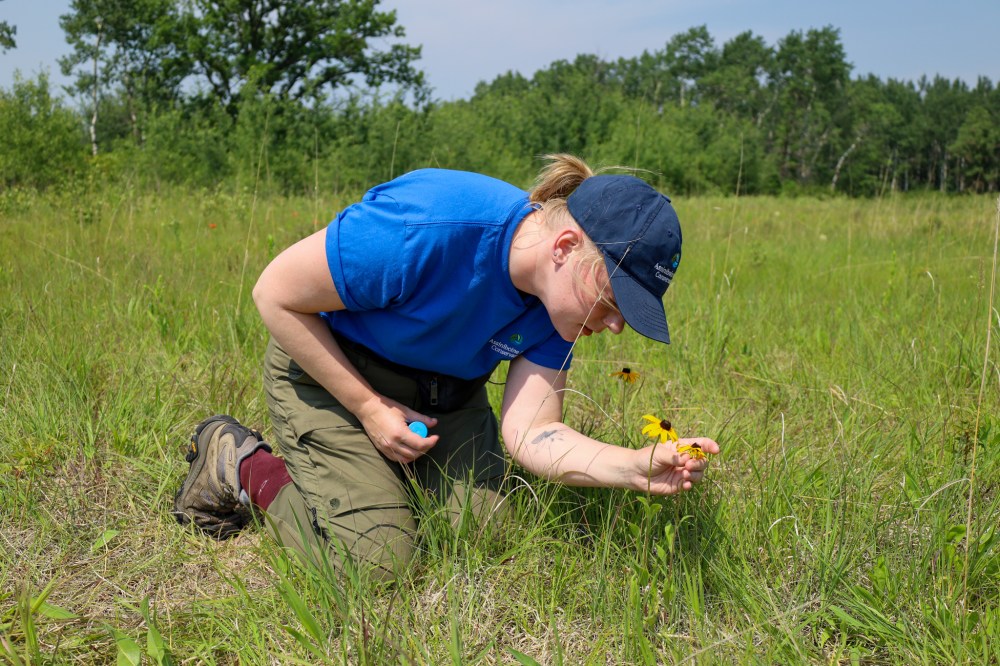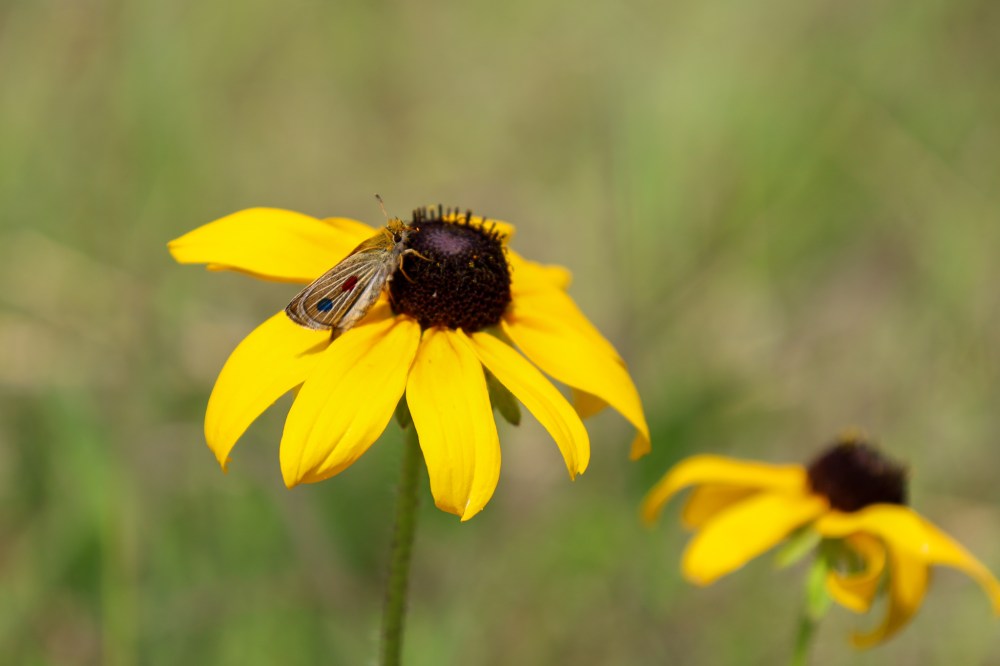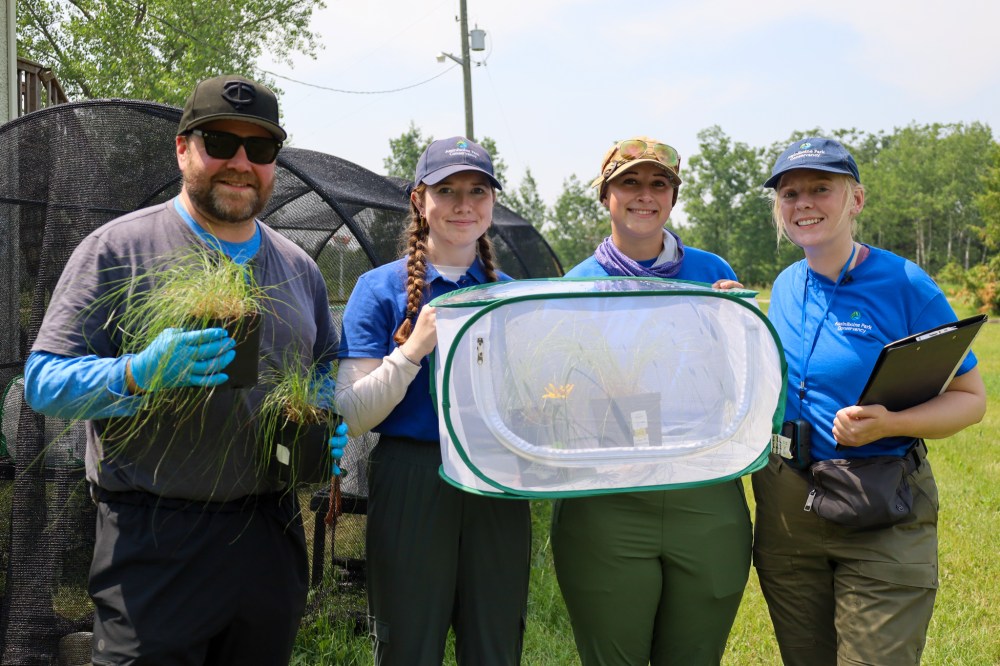Conservation success measured with tiny wings
Advertisement
The annual release of critically endangered adult Poweshiek skipperlings into the Manitoba Tall Grass Prairie Preserve in southeastern Manitoba is being hailed as a success by the Assiniboine Park Conservancy (APC) and Nature Conservancy of Canada (NCC).
Scientists first became aware of the drastic drop in populations of the butterfly during the 1990s and 2000s.
To combat that APC developed a breeding program where they harvested eggs from the wild, hatched them in controlled conditions and released the adults the following year.

The Manitoba Tall Grass Prairie Preserve, located in the RM of Stuartburn, is the only place in Canada that still has a population of Poweshieks.
Its historic range includes southern Manitoba and the Midwestern U.S.
In the U.S. there only remains one location where the butterfly can be found, a small site near Flint, Michigan.
This year 175 were released at the preserve and a further 1,500 eggs collected.
Kirstyn Eckhardt, Conservation Programs Manager for APC, said they are excited and motivated by the success of the program.
“The results are encouraging and a testament to many years of work, research and collaborative effort,” she said.
Conservation scientists breed the butterflies at the Assiniboine Park Zoo, caring for them through the most vulnerable parts of their life cycle.
This is the eighth consecutive year for the program, which has released a total of 719 butterflies back into the wild.

This year more technology is at work, through a process they described as Poweshiek matchmaking, resulting in an increase in the number of breeding pairs and a 180 percent increase in egg collection.
Newly hatched caterpillars spend the winter in an incubator, continue their growth in the spring and are released as adults.
“Data analyses completed last winter and insight from our partners at the Minnesota Zoo suggested pairing younger adult female butterflies with older males might result in higher egg production. Of course, age differences are relative when you consider the that the adult breeding period only lasts about a week at the end of the Poweshiek life cycle,” Eckhardt said. “Regardless, we adjusted our methods this year and are very pleased with the outcome so far, which bodes well for the future of the program.”
And the program seems to be working.
For the second year in a row, they found several wild-born Poweshiek skipperlings in the reintroduction site where zoo-reared individuals were released for the first time in 2023. Adult butterflies were also spotted over a wider area suggesting their range is increasing.
To help locate the butterflies they are also conducting environmental DNA sampling, which collects DNA naturally shed by the target species in its environment.
“This pilot project is still in the early stages, but we hope by testing multiple sampling approaches in the lab, we can identify an effective method of eDNA sampling that could be used to detect Poweshiek in the wild,” Brooklynne Keber, conservation and research specialist in genetics and genomics for APC said.
Melissa Grantham, a conservation biologist at NCC, said butterflies are sensitive to environmental changes and their presence can be an indicator of biodiversity and a healthy ecosystem.

“Because of this, the loss of these butterflies raises concern for the health of prairie grasslands as a whole, and that’s why people should care,” she said. “While we are still working to understand the ongoing threats to Poweshiek skipperlings, we know that much of their original tall grass prairie habitat was historically converted to other uses. It is critically important to conserve and restore these remaining prairie habitats so species like prairie skippers have a healthy habitat to live in.”
That’s why NCC uses land management tools such as prescribed fire, grazing and woody species control to imitate the natural historic prairie.
Tall grass prairie is one of the most endangered habitats in the world with less than one percent of it remaining.
In Manitoba, the tall grass prairie ecosystem is home to around 28 different species at risk including birds, plants, amphibians and butterflies.
